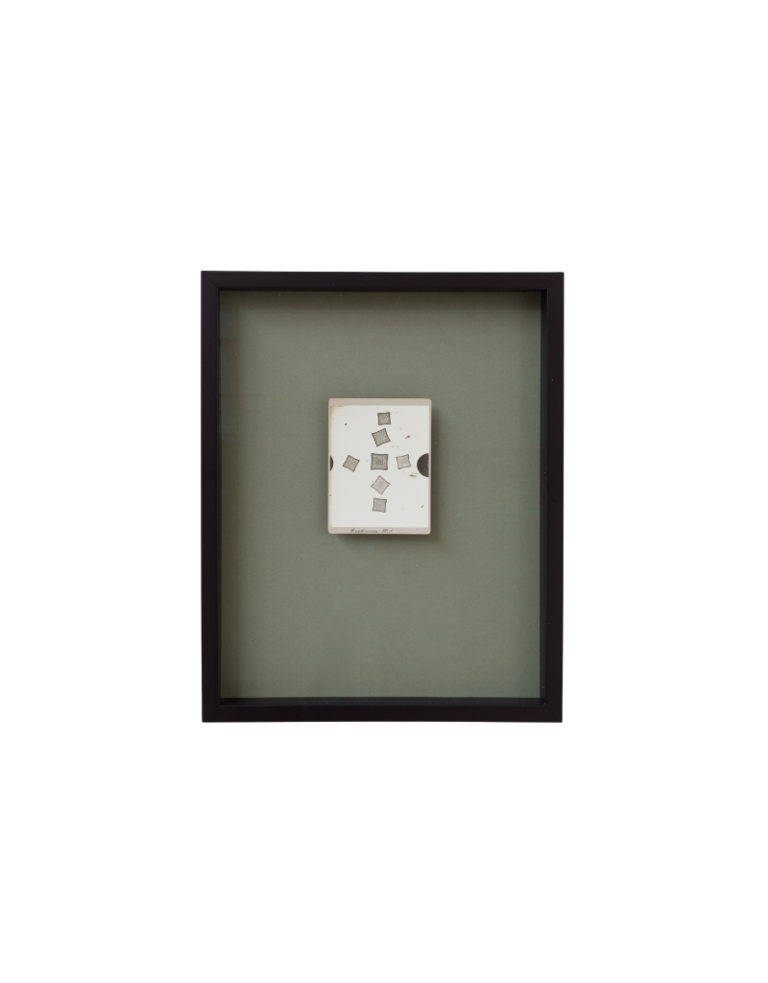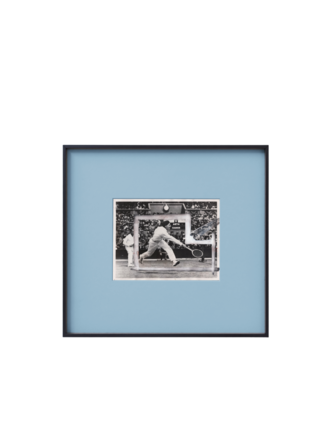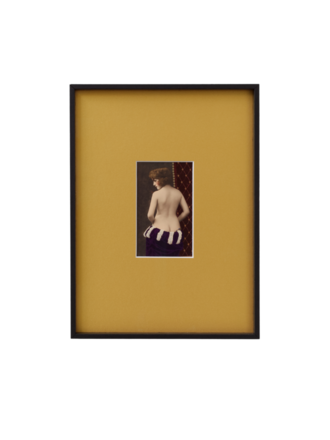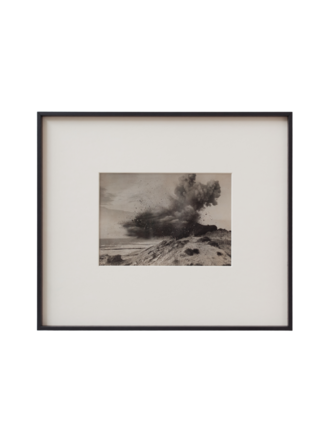

Login
Log in if you have an account
Register
Having an account with us will allow you to check out faster in the future, store multiple addresses, view and track your orders in your account, and more.
Create an accountDetails
- Artist unknown
- titel: Diatomeen 88it.
- Silver gelatine print on cardboard
- Authetication: Sign on the back
- 1910's
- Mounted in a green colored acid-free passe-partout.
- The photograph is framed professionally, using the following specifications: 6 mm. black fineered wooden profile, and anti-UV, True Vue museum grade glass.
- Photograph: Board 12 cm x 9 cm , prins 11 cm x 8,4 cm
- Frame: 25 x 35 cm
Braunschweig. A remarkable story about photography and science "Although the sense of sight enables us to see the many forms around us, there is a world as absolutely invisible to the unassisted eye as the familiar objects of life are invisible to the blind. To those who have eyesight, however, the microscope bestows as great a power of vision as the gift of sight would bestow upon the blind, for it enables them to penetrate the secrets of nature's realm, which without such assistance would for ever remain a mystery.” (Walter Bagshaw, in Elementary photo-micrography, 1909)
Patterns and shapes presented in photomicrographs suggested an abstract and subjective world, which was often extremely pleasing to the eye while challenging the observer’s attention to pattern and detail. But how to share and preserve those revelations of the "invisible realm"? Bagshaw in his book 1902 presents three “ways of showing the special objects of his studyto his friends.
Firstly, he (the microscopist) may exhibit the mounted specimens in the ordinary way, when every individual must of necessity look down the tube of the microscope; or, secondly, he may attach the microscope to a lantern and throw the enlargement upon a screen visible to all; or, thirdly, he may photograph the objects through the microscope, and thus obtain a permanent and ever available record” : the Photomicrograph. In great Britain the first excersize of Photomicrography date back to1802.
Around 1863, in Germany, Joseph von Gerlach (1820 – 1896) published a book entitled "Die Photographie als Hilfsmittel mikroskopischer Forschung" This publication is the first textbook on photomicrography in Germany. Several years later, in 1868, Berthold Adolf Benecke (1843 – 1886) published a more advanced book on this topic under exactly the same title as Gerlach's work published at Friedrich Vieweg & Sohn, Braunschweig. Above a number of interesting points come together which all relate to our outstanding Braunsweig collection: the technique, subject and location.
First the location: Diatoms, plant stems and leafs, insect wings and crystals . The oldest technical University in Germany, the Technical University Carolo Wilhelmina, was founded as the Collegium Carolinum, in 1745. Braunschweig was, and still is today a center for science and boasts a largest number of scientists from biology to physics. It is not surprising that Voigtländer, a manufacturer of mathematical instruments from vienna, settled here, (although it also had to do with the revolutions of 1848 in Vienna, and his wife being born in Braunschweig).Voigtländer objectives were revolutionary because they were the first mathematically calculated precision objectives in the history of photography. It is also the Voigtlaender, Braunschweig, microscope, No. 897 of which " The size of the body tube makes this microscope especially suitable for photomicrography”.
So we have the perfect instruments and the location with his wide range of sciences from medical research to botany, zoology, entomology, geology, chemistry and physics who are all in need of this medium to preserve and share al there experimental findings. This collection we named ‘Braunschweig’ is actually combination of totally different studies, diatoms, plant stems and leafs, insect wings and crystals who show not only that photomicrographs have become indispensable to the understanding of, for instance, plants: what they are made of, how they grow, reproduce and decay but it has helped to shape the understanding of the natural world and to sustain the progress of science and technology through decades of evolution. But what we also see is the potential for Art and Science to touch.
The aesthetic qualities of these Braunschweig photomicrographs, show that composition, light and colour were combined with the intrinsic aesthetic qualities of the microscopic dimension. Without abandoning the scientific and technical quality, the artist-scientist, rearranged, highlighted and interpreted the infinitely small as to capture the hidden beauty of the vegetable, mineral and animal realms with a camera.
Add your review
Review Antique photograph - Braunschweig - green





